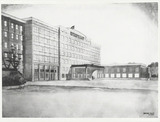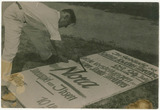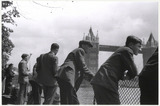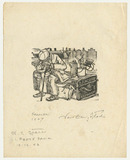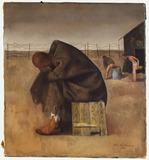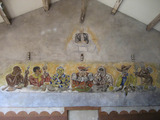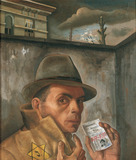German Architects in Exile in Turkey 1933 – 1945
Building on the Bosphorus The foundation stones for career opportunities for German architects in Turkey after 1933 had been laid previously. The country had been undergoing major upheavals since the early 1920s.
German-language exile theatre in the Soviet Union
Until the middle of the 1930s, the Soviet Union offered excellent conditions for actors, directors and theatre musicians seeking exile. Amongst the population of the country, in the Caucasus, the Ukraine and the Volga German Republic, were German-speaking minorities and skilled German workers who had been working for some years in the Soviet Union.
Graphic work
In addition to more than 5,000 paintings, over 12,000 graphics, i.e. works on paper, were confiscated from German museums as “degenerate art”.
Great Britain
Right into the 20th century, Great Britain enjoyed a reputation as a liberal country for immigration and for those seeking asylum. However, by 1920, the British government severely restricted immigration laws, mainly to protect the domestic employment market.
Heinrich Heine-Klub in Mexico City (1941-1946)
The Heinrich Heine-Klub, an organisation of German-speaking anti-fascist intellectuals from different political camps, was founded in late 1941 in Mexico City. The idea to organise events, readings, concerts, lectures and theatre evenings was born at a meeting held in the home of the conductor Ernst Römer in the Colonia del Valle.
Home and homeland
What is it we yearn for when we are homesick? Where is home? Is home the place we were born in? Is it possible to find a new home? Can emigrants and those living in exile find a home in exile?
Internment
Refugees become “enemy aliens”At the beginning of the Second World War many countries interned so-called “enemy aliens”. This meant that all Germans living in a country were arrested.
Internment camp at Les Milles
After World War II broke out, the French government ordered that Germans and Austrians living in France be interned. Many of them had fled from Nazi Germany because of racist or political persecution to find refuge in their neighbouring country, where they were now seen as “enemy aliens”.
Jewish emigration
Jewish emigration involved people from a very heterogeneous population group. They often had little in common except the fact of their Jewish identity as asserted, or rather, alleged by the Nazi regime. The racial policies of the Nazis assigned numerous people the label of “Jewish” who themselves did not identify with Judaism in the least. This caused a conflict of identity for many assimilated Jews who considered Germany to be their homeland.
Kulturbund Deutscher Juden (Cultural Federation of German Jews)
Cultural life between self-assertion and persecutionThe “Kulturbund Deutscher Juden” was founded by the doctor and conductor Kurt Singer in Berlin in 1933. The aim was to create earning opportunities for the many Jewish artists and academics dismissed from their place of employment when the “Gesetz zur Wiederherstellung des Berufsbeamtentums” (“Law for the Restoration of the Professional Civil Service”) was passed.
